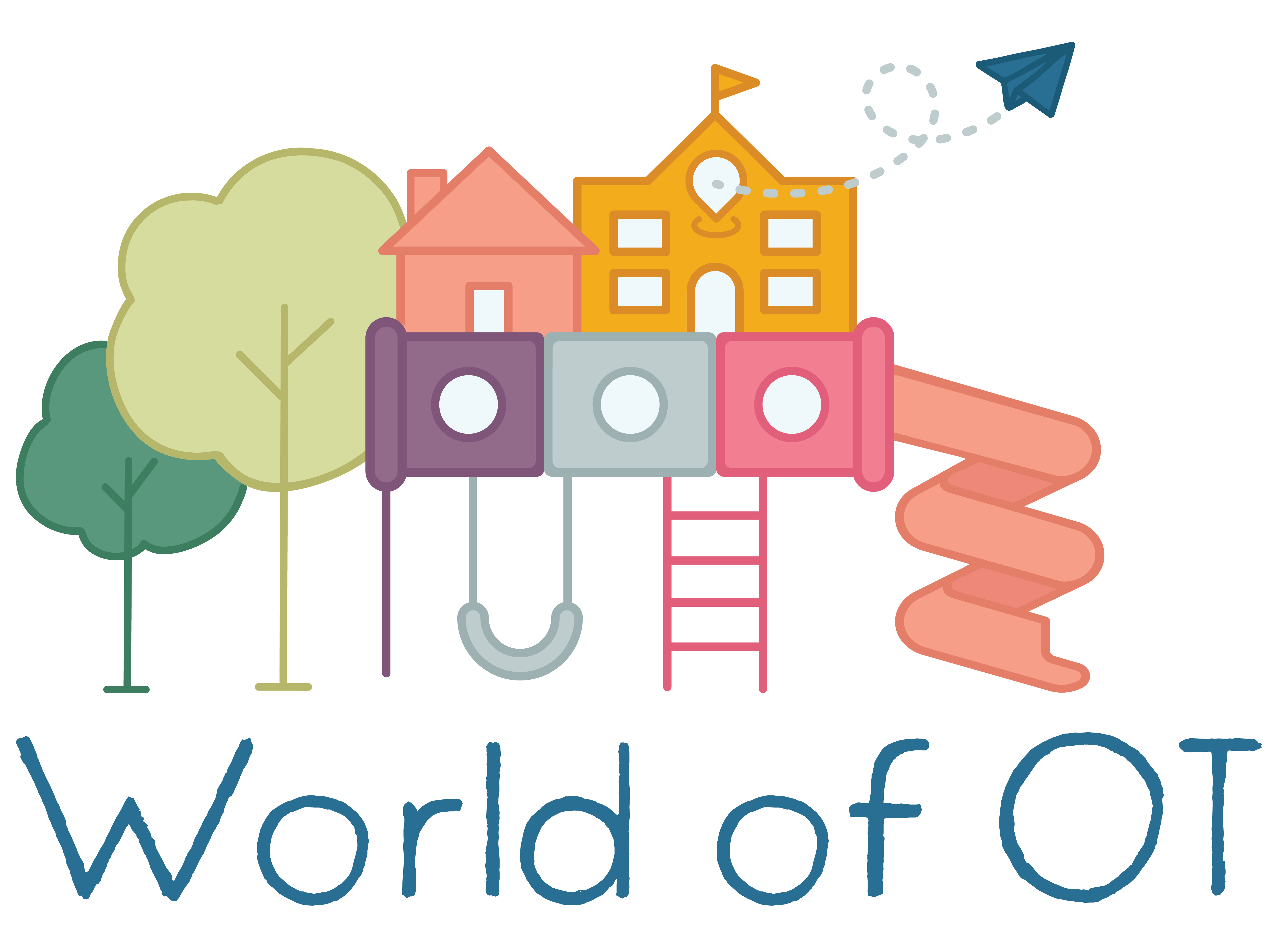
18 Apr Documentation in a School-Based OT Setting
 Paperwork, paperwork! Documentation is a critical component to any clinical setting; it serves as a reference for the provider and team and facilitates interdisciplinary collaboration amongst team members. It helps keep us all on track and ensures matters are addressed in the most effective and efficient ways!
Paperwork, paperwork! Documentation is a critical component to any clinical setting; it serves as a reference for the provider and team and facilitates interdisciplinary collaboration amongst team members. It helps keep us all on track and ensures matters are addressed in the most effective and efficient ways!
In a school-based occupational therapy setting, there are many notable forms of documentation which enable clear communication and reporting about student information, provide reasons for the provision of occupational therapy services, and keep a concise record of the types of services being provided, all while being mindful of the student’s (and their educational team’s) needs and goals.
The amount and variety of documentation may seem intimidating at first, but recognizing the purpose of these documents in the school setting will help you be mindful of what you include in them (based on their function) to clearly and professionally relay the necessary information and best next steps to the team.

So, let’s break down the fundamentals of OT paperwork in the school setting:
Screening Reports
We typically begin screening a student through a pre-referral process. The goal of screening is to determine whether a student needs additional support or services. A pre-referral form completed by the student’s teacher helps the OT determine potential areas to focus on when observing the student. Screening documentation includes basic information about the student, their strengths and weaknesses, the teacher’s report of the student’s level of function, gaps between the expectations and students performance, and skilled observations by the therapist. The screening process concludes with a recommendation for whether a formal occupational therapy evaluation is warranted. If an occupational therapy evaluation is not recommended, the screening report includes a list of recommendations to support the student and educational team.
Evaluation Reports
Evaluation reports include information that is collected throughout the formal evaluation process, which is way more comprehensive than a simple screening. This could include, but is not limited to a review of past records, student’s occupational profile, inputs from the student’s educational team during interviews, a summary of the therapist’s clinical observations with regards to access and participation in the school environments, and results obtained during formal and informal assessments. The results of formal standardized assessments performed during the evaluation process typically include the child’s performance as compared to similar aged peers; this information is vital to communicate to the team at the evaluation meeting. Additionally, the child’s environmental demands and their function in the context of the everyday classroom is also important to consider, and helps inform the decisions about whether occupational therapy services are warranted. When a student is re-evaluated, the evaluation reports give us (and other team members) a deeper understanding of any changes to the areas of need, interventions used and outcomes for the student and team. In the schools, evaluation reports are processed before the start of services and every 3 years thereafter.
IEP (Individualized Education Program)
 Furthermore, IEPs are essential for OTs working in the school setting to ensure that all students are receiving the public education they are entitled to in a non-restrictive environment. The IEP document itself focuses on several different areas broken down distinctly, beginning with the student’s skill levels and what they can or can not do. IEPs should also report on a student’s current goals, including whether or not they have been met. On an annual basis, the team may update the goals, propose new goals, and modify the duration of service and delivery methods to meet the child’s current needs. Accommodations are also very important because modifications may need to occur in the classroom. Before, during, and after the process of updating an IEP, it is crucial to collaborate with the IEP team and additional staff on an ongoing basis.
Furthermore, IEPs are essential for OTs working in the school setting to ensure that all students are receiving the public education they are entitled to in a non-restrictive environment. The IEP document itself focuses on several different areas broken down distinctly, beginning with the student’s skill levels and what they can or can not do. IEPs should also report on a student’s current goals, including whether or not they have been met. On an annual basis, the team may update the goals, propose new goals, and modify the duration of service and delivery methods to meet the child’s current needs. Accommodations are also very important because modifications may need to occur in the classroom. Before, during, and after the process of updating an IEP, it is crucial to collaborate with the IEP team and additional staff on an ongoing basis.
Intervention Plans
Intervention plans deliver information about the types of interventions being used and the plan for how to implement them. In other words, what approaches will you be using to achieve the desired outcomes? Intervention plans can include information about short and long term goals based on previous evaluations. They should be measurable and relevant enough where you know this intervention will have an impact on the student’s potential to successfully participate in the school setting.
Session Notes and Data Collection
As we move forward with OT services, we collect data and take notes during sessions. This documentation not only serves as proof of direct and/or indirect services provided but is also critical for monitoring a student’s progress and is a great tool to refer back to when making decisions about the efficiency of treatment plans. Session notes can be best taken in SOAP format, starting with subjective and objective information. The subjective portion could focus on relevant things your student or another IEP member shares, while the objective part could touch on your skilled interventions, observations and data yielded. In the assessment portion, you use your clinical expertise to analyze and gather information to make conclusions about the child’s performance. And finally, in the plan section, you describe why and how you plan to continue working with the student, including a description of how what happened today may inform your future treatments.
Progress Notes
 Last but not least, quarterly progress notes are important because they show how well you are truly getting to know the student, their progress so far, and the direction for your plans moving forward. Progress notes detail observations during the intervention process, provide data on progress and can include any new information that was obtained that may be helpful in making modifications to the student’s plan. At this point, you can begin to gather information that cumulatively will help the team collaboratively determine during the annual reviews whether their progress is stalled or as expected, demonstrates the need for new functional goals, or whether referrals to other service providers need to be made or if service delivery methods and durations may be reconsidered in the near future.
Last but not least, quarterly progress notes are important because they show how well you are truly getting to know the student, their progress so far, and the direction for your plans moving forward. Progress notes detail observations during the intervention process, provide data on progress and can include any new information that was obtained that may be helpful in making modifications to the student’s plan. At this point, you can begin to gather information that cumulatively will help the team collaboratively determine during the annual reviews whether their progress is stalled or as expected, demonstrates the need for new functional goals, or whether referrals to other service providers need to be made or if service delivery methods and durations may be reconsidered in the near future.
Conclusion
As you can see, there are many different types of documentation in the school system. It’s easy to get overwhelmed with documentation along with the many other demands of being a school-OT. I have tons of resources and templates for documentation included in my course Nuts and Bolts to Becoming a Successful School-Based OT that can help you beat overwhelm and feel more confident not only in your documentation process but in overall being an efficient and effective new school based OT. Looking for more community support? Check out the New to School OT Facebook group to ask questions and give others guidance on their journey.


No Comments